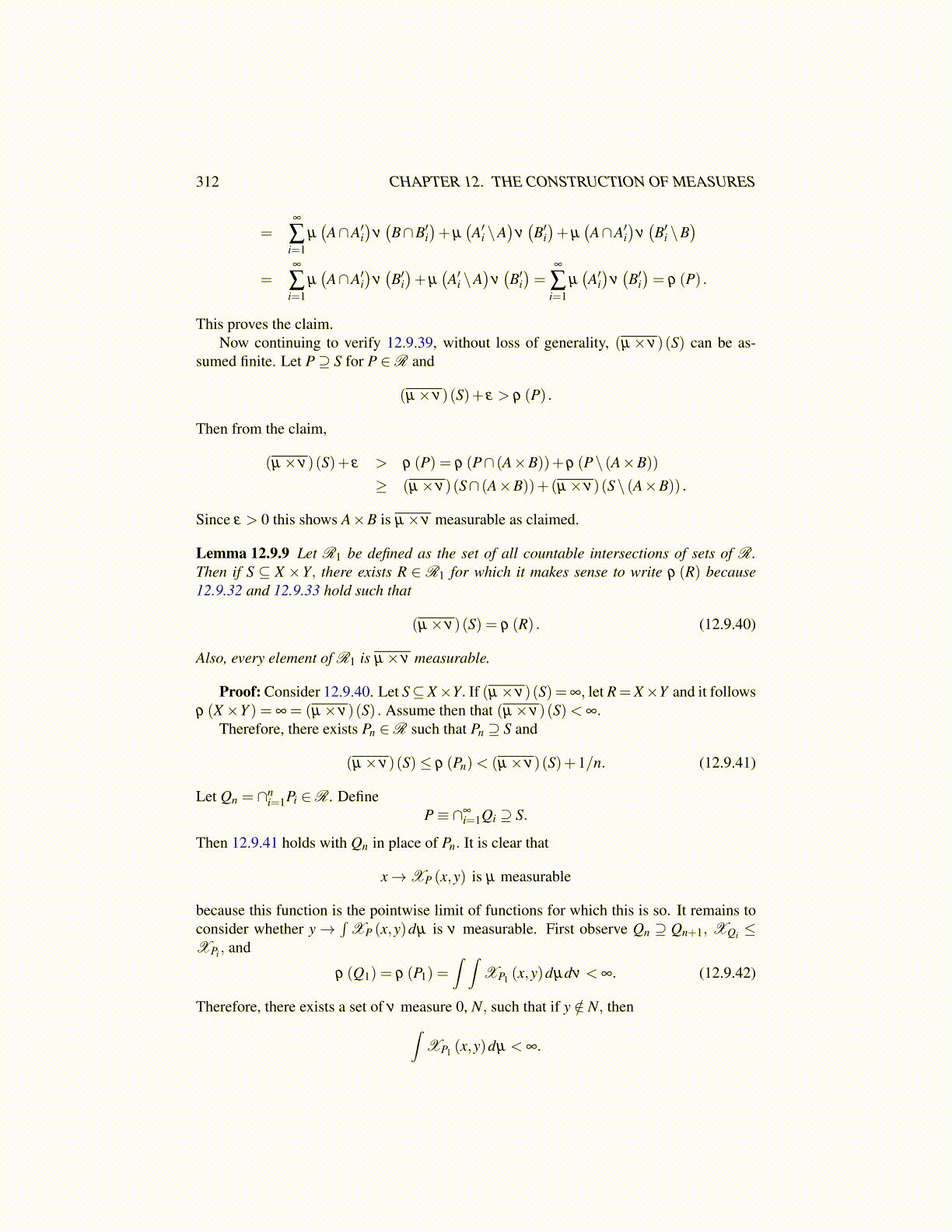
312 CHAPTER 12. THE CONSTRUCTION OF MEASURES
=∞
∑i=1
µ(A∩A′i
)ν(B∩B′i
)+µ
(A′i \A
)ν(B′i)+µ
(A∩A′i
)ν(B′i \B
)=
∞
∑i=1
µ(A∩A′i
)ν(B′i)+µ
(A′i \A
)ν(B′i)=
∞
∑i=1
µ(A′i)
ν(B′i)= ρ (P) .
This proves the claim.Now continuing to verify 12.9.39, without loss of generality, (µ×ν)(S) can be as-
sumed finite. Let P⊇ S for P ∈R and
(µ×ν)(S)+ ε > ρ (P) .
Then from the claim,
(µ×ν)(S)+ ε > ρ (P) = ρ (P∩ (A×B))+ρ (P\ (A×B))
≥ (µ×ν)(S∩ (A×B))+(µ×ν)(S\ (A×B)) .
Since ε > 0 this shows A×B is µ×ν measurable as claimed.
Lemma 12.9.9 Let R1 be defined as the set of all countable intersections of sets of R.Then if S ⊆ X ×Y, there exists R ∈ R1 for which it makes sense to write ρ (R) because12.9.32 and 12.9.33 hold such that
(µ×ν)(S) = ρ (R) . (12.9.40)
Also, every element of R1 is µ×ν measurable.
Proof: Consider 12.9.40. Let S⊆X×Y. If (µ×ν)(S)=∞, let R=X×Y and it followsρ (X×Y ) = ∞ = (µ×ν)(S) . Assume then that (µ×ν)(S)< ∞.
Therefore, there exists Pn ∈R such that Pn ⊇ S and
(µ×ν)(S)≤ ρ (Pn)< (µ×ν)(S)+1/n. (12.9.41)
Let Qn = ∩ni=1Pi ∈R. Define
P≡ ∩∞i=1Qi ⊇ S.
Then 12.9.41 holds with Qn in place of Pn. It is clear that
x→XP (x,y) is µ measurable
because this function is the pointwise limit of functions for which this is so. It remains toconsider whether y→
∫XP (x,y)dµ is ν measurable. First observe Qn ⊇ Qn+1, XQi ≤
XPi , and
ρ (Q1) = ρ (P1) =∫ ∫
XP1 (x,y)dµdν < ∞. (12.9.42)
Therefore, there exists a set of ν measure 0, N, such that if y /∈ N, then∫XP1 (x,y)dµ < ∞.